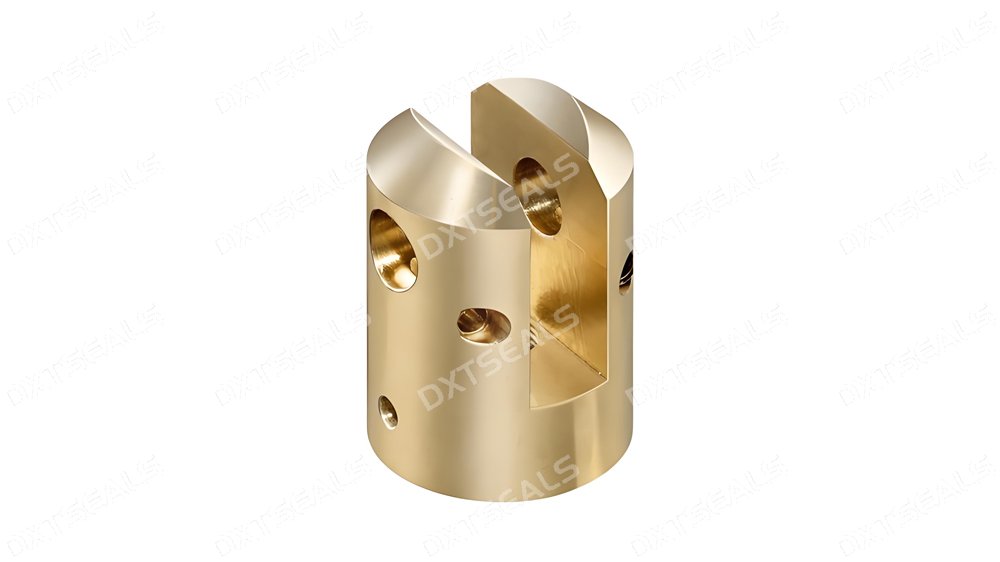
In sealing systems, choosing the right metallic material is essential for ensuring long-term durability, safety, and cost-effectiveness. Among the most common materials used in sealing structures are copper, aluminum, and stainless steel. Each of these metals has unique corrosion resistance characteristics and application advantages.
This article from DXTSEALS provides an in-depth comparison of their performance and practical applications in sealing solutions.
1. Copper: Excellent Conductivity with Moderate Corrosion Resistance
Copper has been used in industrial applications for centuries due to its excellent thermal and electrical conductivity. In sealing applications, copper is often used for gaskets, washers, and sealing rings.
-
Corrosion Resistance:
Copper forms a natural protective oxide layer, offering moderate resistance in air and water. However, it can be vulnerable to strong acids, ammonia, and chloride environments. -
Advantages:
-
High thermal conductivity (good for heat dissipation)
-
Good malleability for sealing rings and gaskets
-
Resistant to biofouling in marine applications
-
-
Limitations:
-
Not suitable for strong acidic or chloride-rich media
-
Higher cost compared to aluminum
-
-
Applications: Electrical sealing components, heat exchangers, marine gaskets, and high-thermal-load sealing systems.
2. Aluminum: Lightweight and Cost-Effective, but Limited in Harsh Environments
Aluminum is widely used in sealing structures where light weight and affordability are priorities. It is often applied in automotive, aerospace, and mechanical equipment sealing components.
-
Corrosion Resistance:
Aluminum naturally forms a thin oxide film, which offers good corrosion resistance in neutral environments. However, in acidic or alkaline media, aluminum corrodes rapidly. -
Advantages:
-
Lightweight, reducing overall system load
-
Cost-effective compared to stainless steel and copper
-
Easy to machine and form into sealing structures
-
-
Limitations:
-
Poor resistance to strong acids, alkalis, and saltwater
-
Lower strength at high temperatures
-
-
Applications: Automotive engine seals, aerospace sealing parts, low-to-medium pressure environments where weight reduction is critical.
3. Stainless Steel: Superior Durability and Versatile Corrosion Resistance
Stainless steel is one of the most reliable sealing materials for harsh industrial environments. Its chromium content provides a stable passive oxide layer that protects against oxidation and corrosion.
-
Corrosion Resistance:
Excellent resistance to water, steam, chemicals, and salt-rich environments. Ideal for high-temperature and high-pressure conditions. -
Advantages:
-
Long service life with minimal maintenance
-
Excellent resistance to corrosion, oxidation, and chemical attack
-
High mechanical strength and toughness
-
-
Limitations:
-
Heavier than aluminum
-
Higher material cost compared to carbon steel and aluminum
-
-
Applications: Oil & gas sealing kits, chemical processing equipment, marine seals, high-pressure flange insulation kits, and food industry sealing systems.
4. Corrosion Resistance Comparison Table
| Property | Copper | Aluminum | Stainless Steel |
|---|---|---|---|
| Corrosion Resistance | Moderate (oxidizes, stable in water/air, weak vs. acids/chlorides) | Fair (oxide layer protects in neutral env., poor in acid/alkali) | Excellent (resists water, steam, salt, chemicals) |
| Strength | Medium | Lightweight, moderate | High mechanical strength |
| Temperature Resistance | High thermal conductivity, stable at heat | Limited high-temp strength | Wide range, suitable for extreme conditions |
| Cost | Medium-High | Low | High |
| Typical Applications | Heat exchangers, marine gaskets, electrical seals | Automotive, aerospace, lightweight sealing | Oil & gas, marine, chemical, food, high-pressure seals |
5. How to Select the Right Material for Sealing Applications
When selecting between copper, aluminum, and stainless steel, consider:
-
Working Medium:
-
Neutral water/air → Aluminum or Copper
-
Saltwater, chemicals, acids → Stainless Steel
-
-
Mechanical Strength Needs:
-
High strength → Stainless Steel
-
Lightweight design → Aluminum
-
Conductivity requirement → Copper
-
-
Budget:
-
Cost-sensitive → Aluminum
-
Balanced cost/performance → Copper
-
Long-term durability → Stainless Steel
-
✅ DXTSEALS Recommendation: For general sealing applications, stainless steel remains the most versatile option. Copper is ideal when thermal or electrical conductivity is required, while aluminum is suitable for lightweight and cost-sensitive projects.
6. Conclusion
The choice between copper, aluminum, and stainless steel depends on the operating environment, performance requirements, and cost considerations. While stainless steel offers superior durability, copper and aluminum also have unique advantages in specific sealing applications.
At DXTSEALS, we help customers select the most suitable material for sealing systems, ensuring optimal performance, longer service life, and cost efficiency.
📩 Contact DXTSEALS today for tailored sealing solutions with the right material selection.
